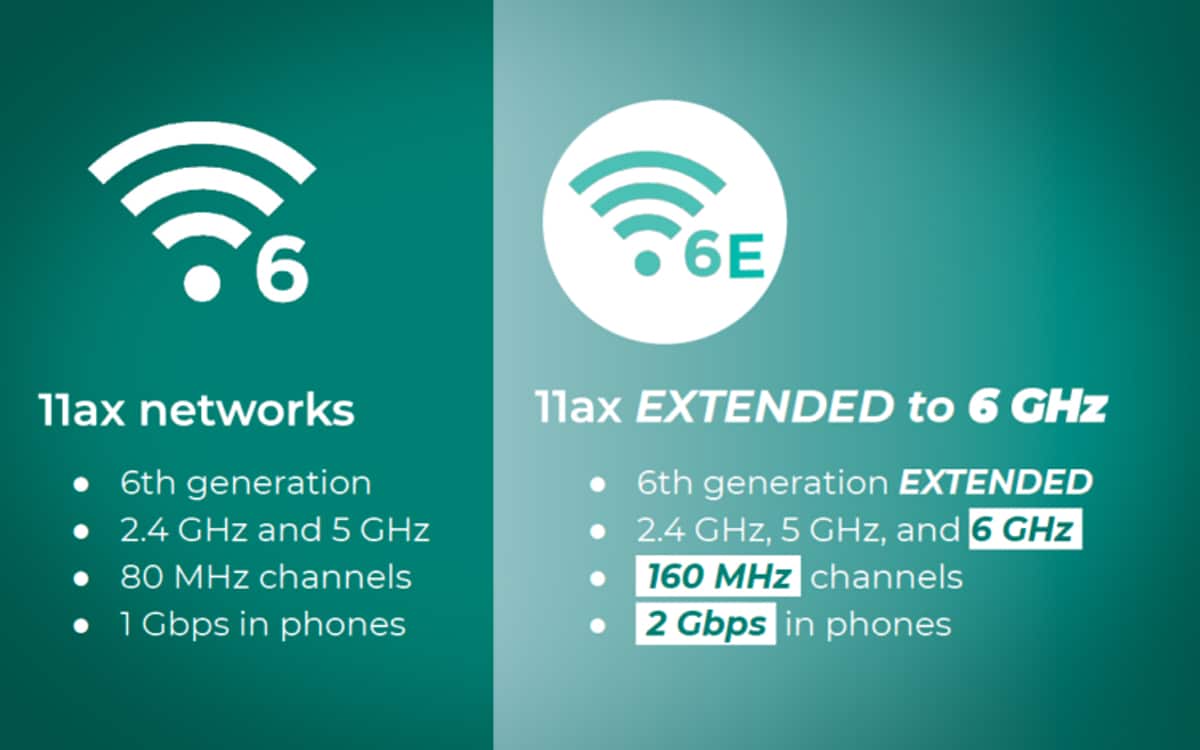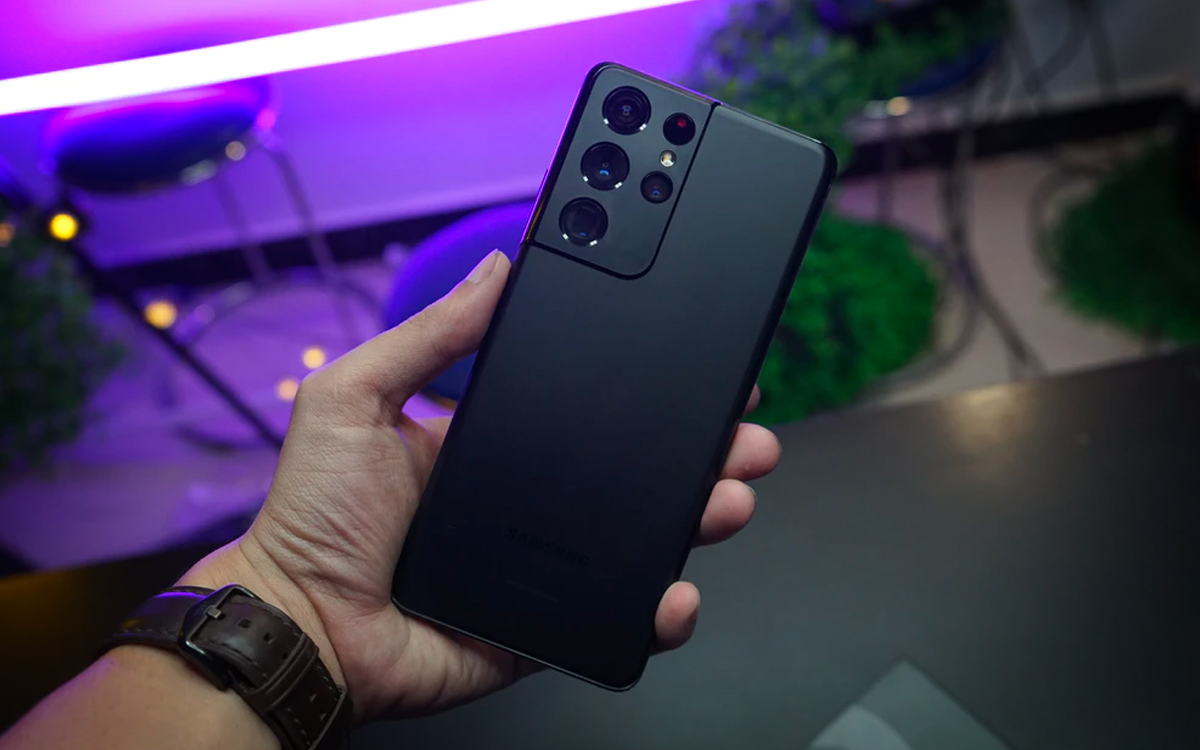WiFi 6 has now established itself as the new standard for wireless connections. But what exactly does this name mean? We invite you to learn more in this file.
Routers, smartphones, computers…. You may have noticed that new devices are now generally compatible with the WiFi 6 standard. But what does this mean in practice, and what consequences for the daily user? Answer in this file.
What is WiFi 6?
WiFi 6 is the latest wireless network standard certified by WiFi-Alliance, the consortium responsible for establishing technical standards for WiFi technology. WiFi 6 and WiFi 6E which we talk about below are variations of the same IEEE 802.11ax standard.

If you regularly hear about WiFi 6 but have never seen any mention of WiFi 5 or lower, that’s completely normal: some time ago, thehas Wi-Fi Alliance announced a change in strategy for the nomenclature of the different WiFi generations:
- Wi-Fi 1 : 802.11a
- Wi-Fi 2 : 802.11b
- Wi-Fi 3 : 802.11g
- Wi-Fi 4 : 802.11n
- Wi-Fi 5 : 802.11ac
- WiFi 6/6E : 802.11ax
Throughput, latency… the advantages of WiFi 6
One of the main advantages of WiFi 6 over its predecessors is speed. It is estimated that approximately 40% gain enabled by this new technology in this regard. The maximum theoretical throughput allowed by WiFi 6 is 10 Gbps. In practice, no one will benefit from such performance, but the average connection speed is significantly boosted with this standard.
Furthermore, WiFi 6 brings the 2.4 GHz frequency band up to date with better speeds. As a reminder, this offers much better range and crosses obstacles better than the 5 GHz band. WiFi 6 will make a huge difference in high-density public places (airports, train stations, open spaces, shopping centers, etc.), where dozens or even hundreds of users use the connection at the same time.
The promise : up to four times greater flow see you now in these kinds of situations. In private homes, beneficial effects also exist: this will help boost performance if you are equipped with many connected objects or if there are a large number of you sharing the same connection.

To achieve this feat, WiFi 6 relies on two protocols. L’OFDMA (Orthogonal Frequency Division Multiple Access) is used to carry out channel division when communicating simultaneously with several devices, thus avoiding band congestion. At the same time, the Mu-MIMO (Multi-User Multiple-Input Multiple-Output) has also been improved, allowing all devices connected to the WiFi network to communicate with the router simultaneously.
In theory, WiFi 5 already provided this functionality. But while routers could send information to multiple devices at once, they couldn’t receive all the responses at the same time. This is where WiFi 6 comes into play. The interest of WiFi 6 does not stop there since it also allows you to benefit from better autonomy on their devices.
Thanks to TWT (Target Wake Time), the battery of our smartphones, tablets or laptops should run out less quickly. The WiFi 6 router is actually capable of transmitting to devices when they should go to sleep and when they should wake up. Our devices thus spend less time in “WiFi alert”, which is an energy-consuming function.
What is WiFi 6E?

Alongside WiFi 6, you have undoubtedly heard of WiFi 6E. They are in fact exactly the same standard. The E simply stands for Extended to reflect a spectrum extended to the 6 GHz band (between 5945 and 6425 MHz). Thanks to this increased frequency range, WiFi 6E can deliver significantly higher speeds of up to 11 Gb/s, as well as lower latency.
However, the 6 GHz range needed to be freed up, which took time. In France and the rest of Europe an agreement has been reached to harmonize technology across the continent. Use of the range was slightly restricted to avoid interference with the CBTC rail signaling system, as well as digital television.
The WiFi 6E standard is of course backwards compatible – all WiFi 6E devices are compatible with earlier standards.
Devices already compatible with WiFi 6 or WiFi 6E

The list of WiFi 6/6E devices is growing day by day. Here are some examples:
WiFi routers
- Orange Livebox 6
- SFR Box 8
- Bouygues BBox Fiber
- Bouygues Bbox ultym
- Freebox Delta
- TP-Link Deco X76 Plus / X96
- TP-Link Archer AX6000
- TP-Link Archer AX1500
- Linksys AXE8400
- Netgear Nighthawk RAXE500
- Asus GT-AXE11000
- Asus RT-AX82U
- Asus ZenWifi AX
- Netgear Orbi AX6000
- Google Nest Wifi Pro
- Mercusys Halo H90X
Orange, which presented its Livebox 5 in October 2019, still does not take this standard into consideration.
Smartphones
- Samsung Galaxy S23
- Samsung Galaxy Z Fold/Flip 5
- Xiaomi 13
- iPhone 14
- iPhone SE 2020
- OnePlus 11
- Google Pixel 8
- Asus ROG Phone 6
Computers
- Apple MacBook Air M1, MacBook Pro M1 and Mac Mini M1
- Acer Aspire 5 Slim Laptop
- Asus ZenBook Pro Duo UX58
- Asus Chromebook Flip c436
- Dell XPS 13/15 2020
- HP Specter x360
- Lenovo Yoga x940
- LG Gram 17
- MSI Prestige range
- Razer Blade Pro 17
- Microsoft Surface Pro 7
- Microsoft Surface Laptop Go
- The Razer Book 13
We expect a very rapid evolution in the number of compatible laptop PCs, thanks to the widespread availability of more recent chipsets. A few years ago, we were praised for WiFi 802.11 ad (60 GHz frequency band), also called WiGig for Wireless Gigabit, and its exceptional speeds.
This standard was ultimately never able to establish itself, because it suffered from a significant drawback: a very low scope. WiFi 6 provides access to speeds as blazing as with WiGig, but with better management of the multiplicity of devices, a much greater transmission distance and with functionality helping to preserve battery life. In short, all good for users.
